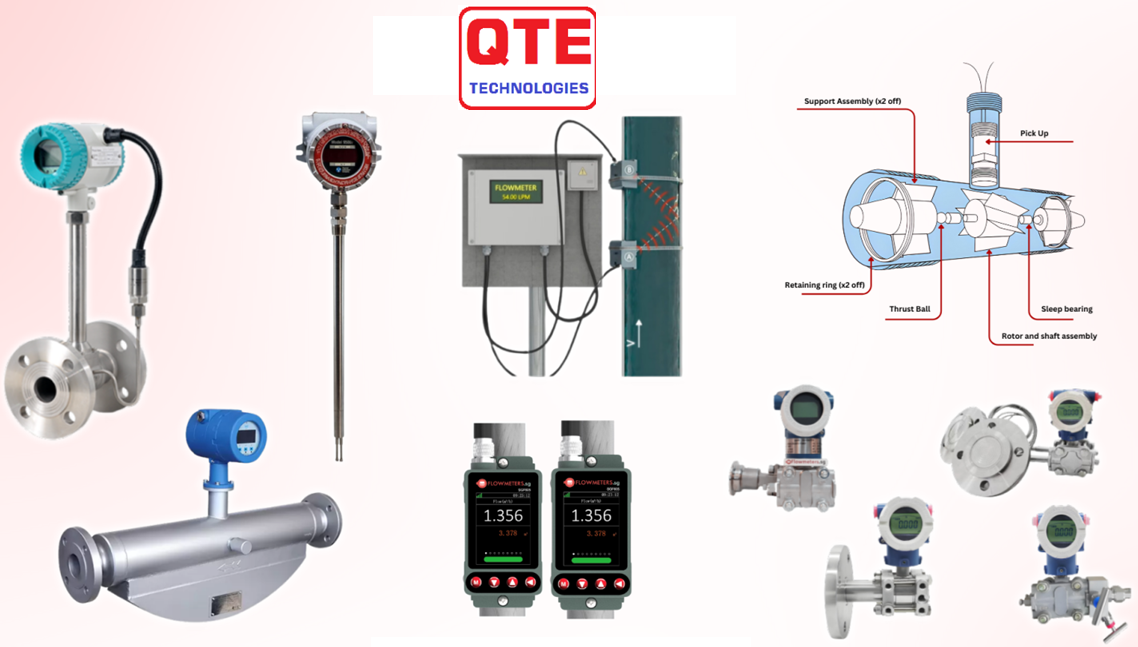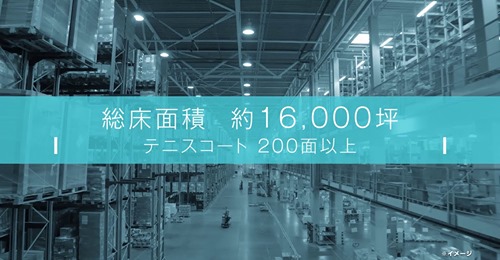
Flowmeters: A Comprehensive Technical Overview of Operational Principles, Construction, Classification, Applications, and Selection Considerations This document is designed to provide you with an all-encompassing and in-depth perspective on flowmeters.
1. General Introduction
Flowmeters are measurement devices used to determine the flow rate of liquids, gases, or mixtures (measured in terms of mass or volume) in modern industrial processes. They play a crucial role in controlling and monitoring production operations across various industries—from chemicals and water treatment to oil & gas and pharmaceuticals—sectors that demand high precision and exceptional stability. A clear understanding of the operating principles and characteristics of each type of flowmeter enables users to select the most appropriate technical solution tailored to a specific application.
2. Flow Measurement Principles
Flowmeters are categorized based on the following commonly used measurement principles:
-
Differential Pressure Principle: Based on the Venturi or orifice principle, the pressure drop across a constriction is converted into a measurement signal. This is a fundamental principle that is highly effective for measuring the flow of liquids with minimal particulate contamination.
-
Variable Area Principle (Rotameter): This type of flowmeter features a lightweight float that is freely suspended in a tapered tube. As the flow rate increases, the dynamic force lifts the float until equilibrium is reached with gravitational force. The float’s position directly reflects the flow rate, as determined by the calibrated dimensions of the tapered tube.
-
Coriolis Principle: In this method, the fluid is directed through a vibrating tube, and a sensor system detects the phase shift induced by the Coriolis effect. This enables precise determination of the mass flow rate, measuring both the velocity and mass of the fluid. This method is notable for its high accuracy and its ability to directly measure flow regardless of any changes in fluid density.
-
Ultrasonic Principle: Ultrasonic flowmeters use sound waves to measure either the transit time or the Doppler effect when encountering particles in the fluid. There are two primary methods:
-
Transit Time: Measures the time taken for ultrasonic waves to travel from one sensor to another through the fluid medium.
-
Doppler: Applied to flows containing bubbles or solid particles, this method uses the frequency shift observed when the ultrasonic wave reflects off moving objects.
-
-
Other Principles: In addition, there are flowmeters based on the paddle wheel mechanism, positive displacement (volumetric) techniques, or employing radar and modern electronic signal processing technologies.
3. Classification of Flowmeters
Based on the measurement principle and application, flowmeters can be divided into several types:
3.1. Differential Pressure Flowmeters
-
Examples: Orifice plate, Venturi tube, Pitot tube.
-
Advantages: Simple design and low cost.
-
Disadvantages: Require frequent maintenance and may cause additional pressure loss in the system.
3.2. Variable Area Flowmeters (Rotameter)
-
Principle: Based on the position of the float within a tapered tube.
-
Advantages: Simple mechanism with direct visual observation.
-
Disadvantages: Accuracy is dependent on calibration and installation conditions; typically suitable only for optically clear fluids.
3.3. Coriolis Flowmeters
-
Principle: Analyzes the phase shift due to the Coriolis effect in a vibrating tube.
-
Advantages: Provides direct mass flow measurement with high accuracy and is independent of temperature or pressure variations.
-
Disadvantages: Involves high initial investment and a more complex structure.
3.4. Ultrasonic Flowmeters
-
Transit Time Method: Measures the transit time of ultrasonic waves through the fluid.
-
Doppler Method: Used for flows containing bubbles or solid particles by exploiting the frequency shift effect.
-
Advantages: Features no moving parts, does not disturb the flow, and is suitable for applications that require high hygiene standards.
-
Disadvantages: Requires optimal conditions for ultrasonic wave propagation and reception, and calibration can be complex for certain fluid types.
3.5. Other Types
-
Paddle Wheel Flowmeters: Measure flow rate via the rotation of a paddle wheel when actuated by the fluid flow.
-
Positive Displacement Flowmeters: Measure flow by quantifying discrete volumes of fluid passing through the device.
-
Radar Flowmeters: Utilize radar technology to measure flow, making them suitable for environments where conventional measurement is challenging.
Each type has its own set of advantages and disadvantages, so the selection must be based on the fluid characteristics, the operating environment, and the specific technical requirements of the application.
4. Construction and Main Components
A typical flowmeter comprises the following components:
-
Sensing Element: Captures signals (such as pressure, ultrasonic transit time, or the motion data of a float).
-
Signal Conditioner/Transducer: Converts the signals from the sensing element into analog or digital form for processing.
-
Processing Unit: Collects, analyzes, and calibrates the measured data.
-
Display Panel: Presents the measurement results in control units such as LPM (liters per minute), m³/h, or GPM (gallons per minute).
Modern systems often include digital interfaces that allow integration with automated control systems or IoT platforms for remote monitoring and real-time data logging.
5. Advantages, Limitations, and Selection Criteria
Selecting a flowmeter is not solely dependent on the measurement principle; the following factors must also be considered:
| Criteria | Rotameter | Coriolis | Ultrasonic | Differential Pressure |
|---|---|---|---|---|
| Accuracy | Moderate | Very high | Very high (depending on the method) | Fair; depends on calibration |
| Initial Cost | Low to moderate | High | Moderate to high | Low |
| Maintenance | Frequent (due to mechanical parts) | Minimal – no moving parts | Minimal | Requires periodic maintenance |
| Application Range | Clear, non-particulate fluids | Versatile; suitable even for fluids with varying densities | Environments with high hygiene requirements | General industrial systems |
Other factors to consider include pipe size, fluid properties (viscosity, abrasiveness), temperature–pressure conditions, and the need for long-term signal stability.
6. Industrial Applications
Flowmeters are widely used in various industries:
-
Chemical and Oil & Gas: Monitor the transfer of chemicals, oil, and gas with high safety and precision.
-
Water and Wastewater Treatment: Control water flow in treatment installations and distribution networks.
-
Food and Pharmaceuticals: Ensure high levels of hygiene and accuracy during production.
-
HVAC and Gas Treatment Systems: Measure air flows in air conditioning and emissions control systems.
Integrating flowmeters with automated control systems allows for continuous process adjustments, which contribute to energy savings and production optimization.
7. Standards and Technical Requirements
International and national standards, such as ISO and TCVN, are implemented to ensure the quality of flowmeters:
-
TCVN 8193:2015/ISO 1438:2008: Applies to the design and calibration of water distribution systems and differential pressure flowmeters.
-
Standards concerning measurement accuracy, resistance to temperature and pressure, as well as compatibility with automated control systems, form essential requirements for industrial applications.
8. Development Trends
In an era of increasing digitalization and automation, flowmeters continue to evolve:
-
Integration with IoT and SCADA Systems: Enables remote monitoring of flow rates and real-time data analysis.
-
Smart Sensors: Incorporate self-calibration and digital signal processing to improve accuracy.
-
Application of Artificial Intelligence: Assists in fault prediction and the identification of anomalies during the measurement process.
These trends not only enhance operational efficiency but also reduce maintenance costs, thereby increasing the competitiveness of modern manufacturing plants and production systems.
Conclusion
Flowmeters are among the most critical measurement devices for accurately quantifying the flow of liquids and gases in a wide range of industrial applications. A thorough understanding of their operating principles, construction, types, and selection criteria enables engineers and managers to make well-informed decisions that optimize production processes, ensure safety, and reduce costs. It is hoped that this document has provided you with a comprehensive overview and the detailed technical insights necessary to select, implement, and operate flowmeters effectively in your systems.
QTE Technologies, an international MRO supplier, offers a wide range of flowmeters. We pride ourselves on serving customers in over 180 countries. You can contact us at any time via our 24/7 live chat support, phone, WhatsApp, or email. In addition, please explore what our valued customers are saying about our services on our dedicated review page.
Post Author By QTE Technologies Editorial Staff (with a solid background in both technical and creative writing - accumulated 15+ years of experience).




